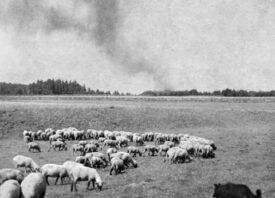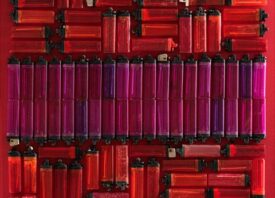Search this site
Photographer Creates Beautiful Sea Sculptures From Discarded Beach Debris
We city folk are so familiar with debris this day and age that to see a pristine piece of terrain might be jarring. Photographer Jeremy Underwood’s photographs of his structures-in-the sea almost look endemic to the scene but the scene has been set, so to speak. We spoke with Houston-based Underwood a bit more about his series Human Debris as the catalyst in helping him transition from “image-taker to image-maker” and about its underlying environmental themes.


How did the idea of Human Debris come to you, and were you already working with found materials/sculptures at this time? How was that transition?
“Originally, I was visiting a state park that I like to frequent when I had come across a small beach. I simply couldn’t believe the devastated state this area was in. Trash covered the beach, from end to end, a sad testament to the problem at hand. For the first time as a photographer, I felt that taking a picture simply wasn’t enough. I began collecting debris from the beach and assembling these sculptures in hopes that others would take notice and see the appalling conditions of the waterways. Traditionally, I’ve spent most of my practice searching out images, hunting them down, and collecting them from the environment. Human Debris represents a pivotal shift in my approach from image-taker to image-maker.”


Are you working on other projects that speak to the environment?
“Holistically, my work embodies our complicated relationship with the environment and the contemporary landscape, focusing on the tension between nature and culture shaping these physical spaces. I have photographed projects exploring Chernobyl, mining areas, as well as wilderness stewardship on a National Wildlife Area but all my work relates back to thinking about our relationship with the land.”
How did this series impact you as a person/photographer?
“I believe that anyone who makes work about the environment is curious about how in the world we got ourselves into this situation…and how we will get ourselves out. For me, the work offers a place to research and negotiate meaning, providing a space to explore the complex relationship we have with our world and our place within it.”





